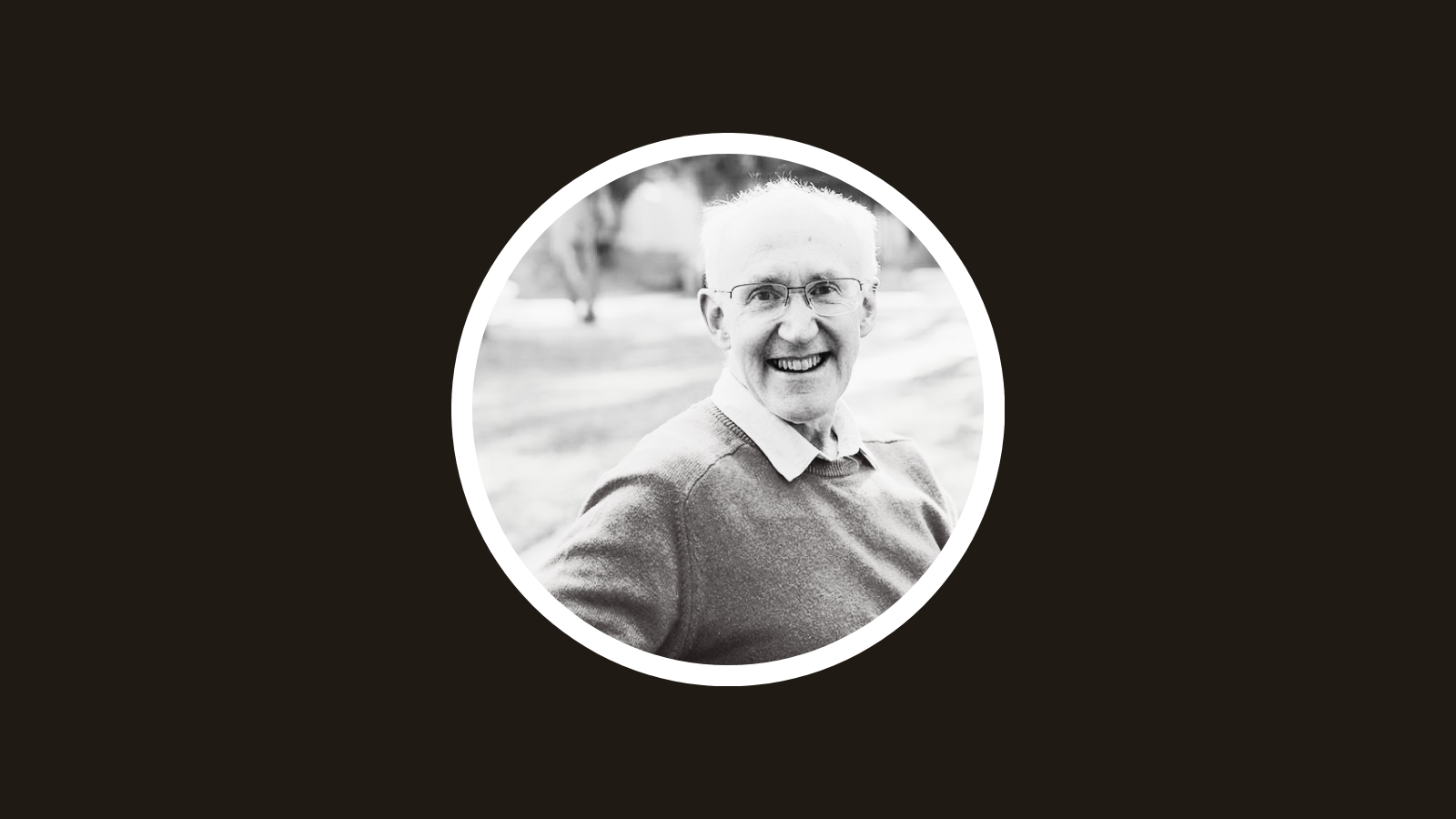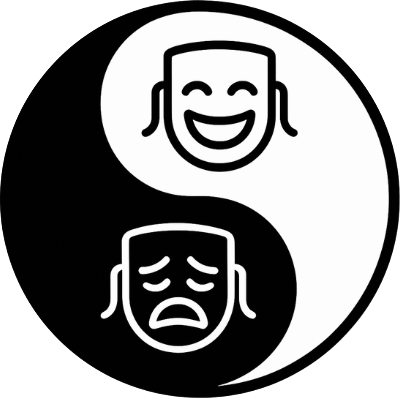#Verified: Dr Mark Seton
We're interrupting our usual #Verified programming of interviews with sport science and peak performance psych pros to bring you a special guest from our very own world of theatre-land.
Dr Mark Seton is the founder of Sense Connexion – a company on a mission to empower and inspire resilience in actors, a lecturer in Creative and Performing Arts at Excelsia College, and an Honorary Research Associate at The University of Sydney's Department of Theatre and Performance Studies. His research into actor health and well-being is some of the most cited in the space, as testified by his being bestowed the prestigious Churchill Fellowship in 2009.
Here, we speak to Mark about vulnerability, the origins of "character", and hand dances.

You originally entered the arts as a performer. What led you to pursue research into actor well-being?
Mark Seton: My awareness of the challenge of being an actor can be traced right back to my last year of high school when I chose drama as an elective. We were never given deep training in Stanislavski or anything – it was more about the experience of doing drama rather than being given particular skills.
We were working on scenes from The Crucible by Arthur Miller, and I still have the vivid memory of just feeling unsettled, feeling disturbed by the intensity of those themes and the heightened emotionality. I remember these things lingering with us after each class. There was no discussion or debriefing; we just went to the next class or had a lunch break. What was more interesting, though, was about three weeks after, we were suddenly no longer doing The Crucible; we were doing a farcical melodrama with a clown named Buttons who's seduced by a circus girl. There was no rationale, but my hunch is it was an awareness that our drama teacher had maybe misjudged the power of [The Crucible] on us.
After leaving high school, I chose to have a gap year and got a job as an advertising trainee, starting to learn about how to use audiovisual technology and write scripts. I then transitioned from being an advertising trainee to working on audiovisual production at an educational level, and did a degree in Library Science at the same time, part-time. But I recognised I'm a communicator – I love doing research, but I'd like to use the library, not create the library for other people to use. So that began a long journey [of research] into the creative arts ... but it had its roots right back in high school.
Most of us appreciate the importance of deepening vulnerability in our work, but few are aware that this must go hand-in-hand with resilience. Why is this important?
MS: I'll start with a few definitions. I draw upon the work of Rosalyn Diprose, a University of New South Wales [in Sydney, Australia] philosopher and scholar, who describes vulnerability as "the capacity to affect and be affected by the other" – the other being another person, a text, an image, a sound, a piece of music.
Then I look to the work of Margrit Shildrick, challenging the predominant Western notion that to identify as vulnerable suggests a failure of self-protection. What if we regard being vulnerable as an innate and valuable part of all human beings? Once we start from that premise, we have a whole different way of engaging with vulnerability. There's an assumption that vulnerability is in a person rather than a human dynamic of what happens between us. That kind of positioning tends to put all the burden on the performer and very little on the willingness of the audience.
Another important thing in our culture, in Western theatre, is that we have certain expectations about what "good" performance is and what "not good" performance is, and in the last century, we identified "good" performance as "real". I think that usually comes back down to a perception that the actor is somehow being vulnerable in front of us – that they are allowing themselves to affect and be affected by the other.
The importance for young actors, either in or just coming out of training, is to reflect on how they've been trained to go into character, [as] how they go in will affect how successfully or unsuccessfully they come out at the other end. I think in terms of "How do we be resilient in our vulnerability?". I positioned it that way because I'm not about risk aversion. I'm still excited to have rich performances – that's good storytelling – but I am about risk management and having a wise approach to creating character.
I like to think of performance as like climbing a mountain, where we acclimatise to get to the heights, but we can't live up there. We need to know how to come back to base camp and everyday life after the show ... If you're confused about the way in, you're probably going to get confused about the way out.
Where do you start with actors new to this idea?
MS: I talk about the history of the word "character", which is actually traced back to the notion of "shape", like a Chinese character. It's a socially constructed shape. It doesn't have any meaning on its own. It only has the meaning that we – if we're in the know – attribute to it. Therefore, character is about creating a shape, but also recognising that shape then impacts us.
So I invite actors to really think – how are they creating character? Maybe we need to have a conversation about that. Is it a healthy way of doing it or not? And then "shaping out", which might include keeping part of the shape of the character. That's going to be part of the conversation, too – what are the things from the character we really want to let go of, and what are the things we may want to keep?
What are a few examples of healthy ways we can "shape out" or cool-down after a show or day of shooting?
MS: Our studies showed that the number one way [actors "cool down"] was to go for a drink after the show with friends. If you're still learning how to cool down in a more sustainable way, but you feel the need to have a drink, please have it with friends because it's the social aspect that will be part of the cooling down process. It's a good thing that you're connecting with people and are reminding yourself and them of you as different from the character you've just been.
The next thing would be to identify what helps you re-ground yourself in terms of emotional regulation. If you're feeling hyper, what are the things you can do to bring that down to a more equal level? For some people, it might be a lot of running around. For others, it might be meditation. There's no one right way to bring that down, but whatever it is, it's what you need to do.
The next thing I'd offer after those would be a practice I take from InterPlay [a methodology of unlocking the body's wisdom] which is called the "Hand Dance". I like to bring it in both the warm-up and the cool-down. In the warm-up, it reminds the body that I am flexible and able to change shape. I close my eyes, allowing one hand – maybe two hands – to move wherever it does, going with the music, going against the music, for three or four minutes.
Then, at the end of each performance, doing another Hand Dance as a way of releasing the tensions, anxieties, and stresses inherent in the character and also inherent in my desire to deliver a professional and impactful performance. My body needs to get rid of that sort of negative energy pretty quickly.
Finally, if you could inject one lesson or practice into actor training worldwide, what might that be?
MS: My gut instinct would be the Hand Dance because of what it achieves, but let's add one more. The next one is called "A Dance On Behalf Of". You have people in pairs, and I share a story I feel safe to share with you about a really challenging role I had to play – that I felt I didn't do very well at, that I felt perhaps some shame about, maybe some people made fun of me, or I felt attacked in some way. Your role is not to ask me questions but just to receive my story – emotionally, cognitively, energetically – and then I invite you to do either a hand dance or a full body dance on my behalf.
You would do that to the music – and I should say the music is always without any lyrics, so it allows us creative freedom and doesn't distract us by becoming cognitive. After that piece of music, you would share what you noticed and enjoyed about doing the dance on my behalf and then I would share what I noticed and enjoyed about your dance on my behalf.
I continue to take great joy and delight in the power of that [exercise]. Firstly, to honour our humanity. We're human beings who act. We're not "actors". We're not some strange breed. We're human beings. Secondly – particularly in shaming stories – the capacity to name the shame, we know from Dr Brené Brown, decreases its power very significantly. Therefore, that's one less shaming event that will impact our capacity to be open, vulnerable, and powerful. We've now helped each other to process that and build trust and connection.
Mark's qualifications: BA (Theatre & Philosophy), Graduate Diploma in Arts by Research (Theatre), Doctor of Philosophy (Performance Studies).
Big props to Mark for his time. You can find out more about Mark's work and say hello here. If you do reach out, let him know you're a Dojo amigo 👊
